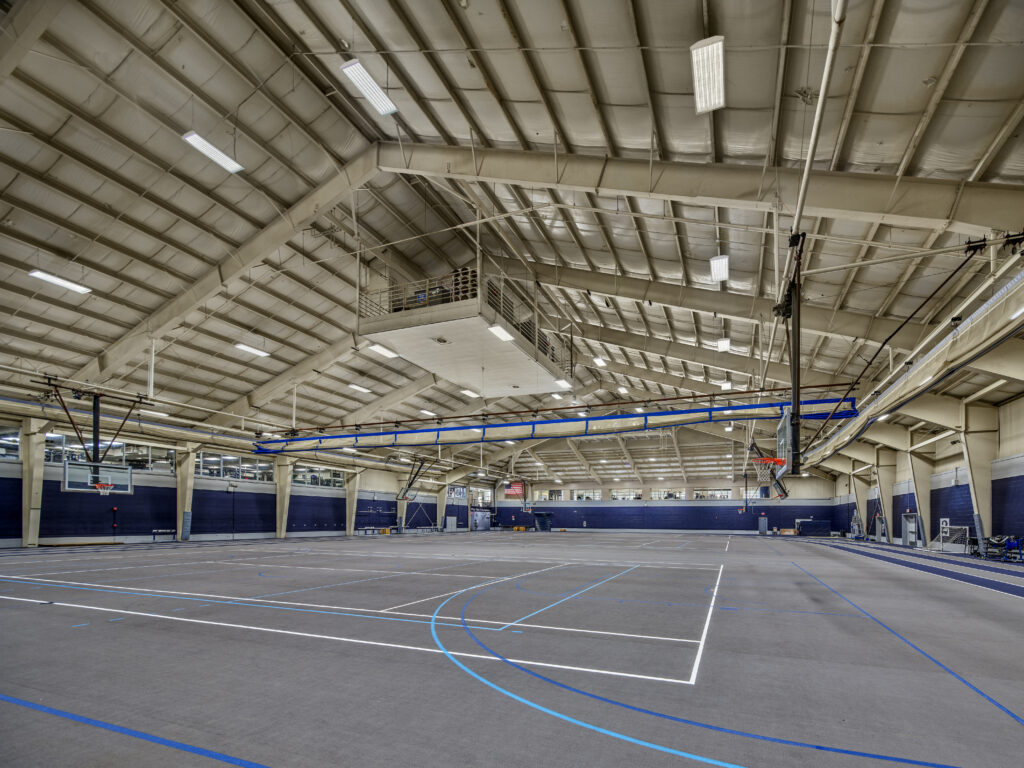Moravian University in Bethlehem, PA achieved energy saving of greater than 50 percent by retrofitting fluorescent lamps and ballasts with Lutron LED drivers and C-Flex LED lamps, while repurposing the existing fixtures and controls.
By Tom Shearer, Lutron Electronics Co., Inc.
The lighting industry’s move from fluorescents to LEDs is a once-in-a-generation technology shift. Since the 1970s, fluorescent lighting was the dominant source in commercial buildings, but over the last decade, LEDs became the de facto choice for new projects and lighting upgrades. Couple the industry’s progression to LEDs with federal and state legislation aimed at driving significant advances in sustainability, and the transformation away from fluorescents is nearly complete.
While LEDs are the clear path forward, today much of the commercial lighting in North America is still switched fluorescent. In recent years, several U.S. states and Canada have introduced legislation banning the sale of fluorescent lamps. About a dozen others have restrictions on high-CRI linear fluorescents in the works, and the federal government is banning the sale of most incandescent bulbs as of August 2023, with additional restrictions on halogen bulbs.
As regulations move to cement LEDs as the preferred light source, the availability of replacement fluorescent lamps and ballasts will continue to decline, and maintaining installed fluorescent lighting will become increasingly difficult.
The good news is, in addition to being mercury-free and energy-efficient, LEDs offer tremendous advantages. Long lamp lives result in fewer lamps purchased, less packaging, and less raw material used over time. LEDs also offer high-performance and unparalleled control flexibility, color options, tunable white capability, and digital control options with the ability to adapt as space needs change.
In short, more companies will cease the manufacture of fluorescent lamps, ballasts (both switching and dimming), and fixtures. Properties still using fluorescent technology will have to have to upgrade to LEDs to keep the lights on.
The Path to Fast, Simple, LED Upgrades
If this all sounds intimidating, it really isn’t. New buildings are already designed with LED lighting and controls, and in existing spaces LED upgrades effectively deliver simple, long-life, energy-saving solutions.
To help simplify the fluorescent-to-LED upgrade process, TLED (Tubular LED) retrofit kits can be used to make upgrades fast and easy by bundling the TLED lamp with the appropriate driver — simply replace the lamps and ballasts with TLED lamps and LED drivers. Many kitted TLED options, such as the C-Flex products available from Light Efficient Design and a variety of kits from other manufacturers, improve light quality and ensure uninterrupted lighting performance in a straightforward process that can often be completed without replacing existing fixtures.
If your customers are using a control system with their current fluorescent lighting, you can often replace the fluorescent lamps and ballasts with LED lamps and drivers with no impact on the control capability. Most digital control systems will work with LED upgrade kits and do not require extensive rewiring or opening of walls or ceilings.
If you choose to replace the existing fluorescent lighting with new LED fixtures, lamps, and drivers rather than using a TLED upgrade kit, start with the right components. Not all LED drivers (or retrofit kits) are created equal. Research and select high-quality LED lamps and drivers before you begin the upgrade process, and work with the manufacturers to be certain you have chosen components that have been tested together for compatibility and performance.
Compatibility was not an issue with fluorescent lighting — fluorescent light sources all have similar characteristics and can work with almost any ballast. But LED light sources are not manufactured to a common standard. There are thousands of LED configurations that may be used in the light source, so LED drivers must be selected for their ability to work reliably with the chosen light source. Low-cost or incompatible lamps and drivers can cause you to have to replace the LED driver soon after the upgrade is complete, adding cost, complexity, and frustration. For this reason, it is extremely important to choose high-quality drivers, with robust warranties, and long-life expectancies.
Consider the Advantages of a Digital Lighting Control System
For buildings with basic, switched fluorescent lighting, LED upgrades present the perfect opportunity to consider how a smart lighting control system can transform lighting from an operational necessity to a building asset. LED drivers are digital; they can easily integrate with a lighting control system to facilitate superior dimming and color-temperature adjustments in your space.
Digital control systems can make a space more comfortable, versatile, and energy efficient, with the additional advantages of helping to make your space higher-value and more future-proof. As part of a well-planned lighting retrofit, you can install a robust, wireless, energy-code-compliant control system quickly and with low labor costs.
Ask the Big Questions at the Beginning of the Job
Talk with your customers about the changing fluorescent lighting laws and help them get ahead of LED upgrades so they are not caught with fluorescent lighting that needs to be replaced with no way to purchase the required lamps. Work out an upgrade strategy that respects their maintenance schedule and budget — with the right LED upgrade kit, you can typically start with one area and develop a plan to upgrade the total project over time, and on a set schedule.
If your customers have concerns about the cost of replacing their existing control system, reinforce the ability to replace lamps and ballasts with no impact on the controls, and emphasize the simplicity of TLED retrofit kits. Understand what the customer expects from their LED upgrade. Are they just looking to mitigate problems with obsolete fluorescent lighting, or do they hope to improve dimming performance and light quality? To get the most out of smart, digital control systems and to address any questions about compatibility and performance, count on support from the controls manufacturer. LED retrofits open tremendous opportunities for you to add value and build your relationship with the customer.
The fluorescent era is quickly closing. Embrace the energy-saving, light-quality improving, control-enhancing power of LEDs in all your commercial projects.

Tom Shearer is systems sales engineering leader at Lutron Electronics Co., Inc. He joined Lutron Electronics in 2001 after graduating from Virginia Tech with a BSEE and background in power electronics. After developing fluorescent dimming ballasts, Tom led the development of Lutron LED driver products to achieve the same control performance as standard light sources on the market. He holds patents in the areas of LED driver technology, and control of tunable white lighting. Tom is a member of the Illuminating Engineering Society (IES), and the Institute of Electrical and Electronics Engineers (IEEE) and has presented at technical seminars and conferences on the topic of LEDs, LED drivers, and lighting control in general.
![]()


